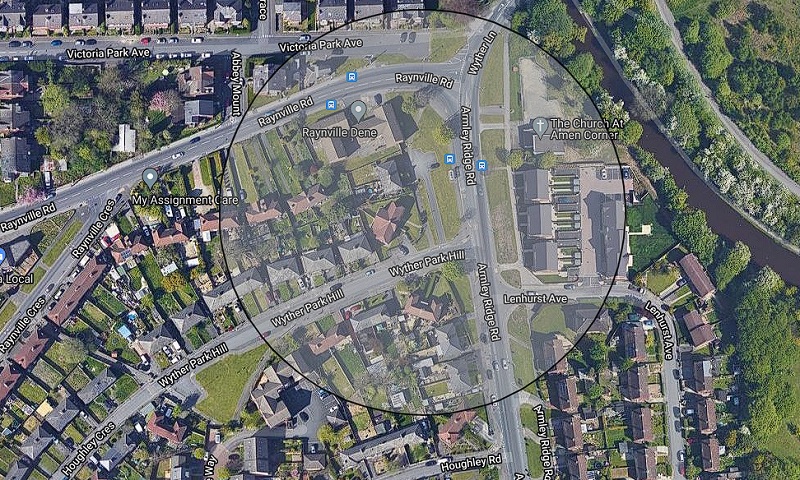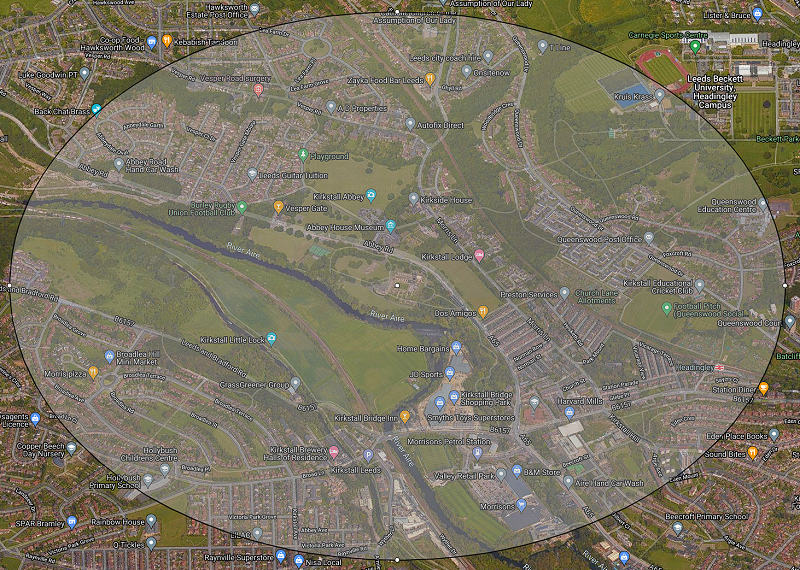Words: Mark Stevenson
One explanation for the term ‘Amen Corner’ is that before the Reformation there was a regular procession of the clergy around their church/cathedral/abbey.
This involved reciting the Lord’s Prayer, with the ‘Amen’ ending on a corner – or something to that effect.

I have found numerous Amen Corners around the country, some near religious buildings, some not. Although they may have been long gone before the Victorian maps were surveyed.
All the Amen Corners that I was able to find near religious buildings, like St Nicholas’ Cathedral in Newcastle and St Paul’s Cathedral in London, were within spitting distance of the said buildings.
The Amen Corner in Armley has a similar explanation given to it, with Kirkstall Abbey being the religious building and the monks holding the procession.
While this may be true, I find it strange all the other Amen Corners seem to be close to their religious building.
The one in Armley is roughly 1,000 metres away from Kirkstall Abbey as the crow flies, with a river crossing in between. Even if you used the paths/roads of the time you still had to cross the river, which may not always have been possible due to flooding. What we now call Amen Corner may well have just been fields when the monks were around.

Amen Corner is bigger than you might imagine. In the 1840s it stretched across three plots of land.
One plot of land where the church is now at the bottom of Armley Ridge Road was owned by Sir Sandford Graham Baronet and occupied by John Raines. The plot was a grass field called Amen Corner. John Raines lived roughly where the parade of shops are on Armley Ridge Road. There was a house, garden, stockyard, stables and a cottage there.
Another plot was owned and occupied by John Gott Esquire. The plot stretched from the junction of Raynville Road/Raynville Cresent down to Wyther Lane and across to Wyther Park Hill. It was a grass field called Amen Corner.
The last plot wasn’t a field as it had been built upon and had eight cottages owned by Mrs Scholefield and occupied by cloth dresser William Cox (35) and others.
The others were John Chadwick (50) stone mason, Christopher Dean (25) book keeper, Thomas Tellison (25) farmer, James Cox (40) clothier, John Daniel (65) clothier, James Wright (30) stone mason, Mary Breatcliffe (50) independent and George Hasker (40) agricultural labourer.


I was informed as a child that Amen Corner was so named because travellers that had lodged at Kirkstall Abbey had to leave before the early morning prayers (Matins I think). Those travelling West along the road to Dewsbury and points west could hear the prayers of the monks as they travelled until they had to cross the River Aire via a bridge whuch caused a kink, or corner, in the road. It was at this point that they heard the final Amen of the monks and thus it became to be known as Amen Corner.
What we know about this concept, I imagine, is relatively new.
My conception is lead by pronunciation.
AMEN corner, or ARMEN consider thus.
And from whence…
‘ Eye, theirs the rub”
Now your logical paradigms…